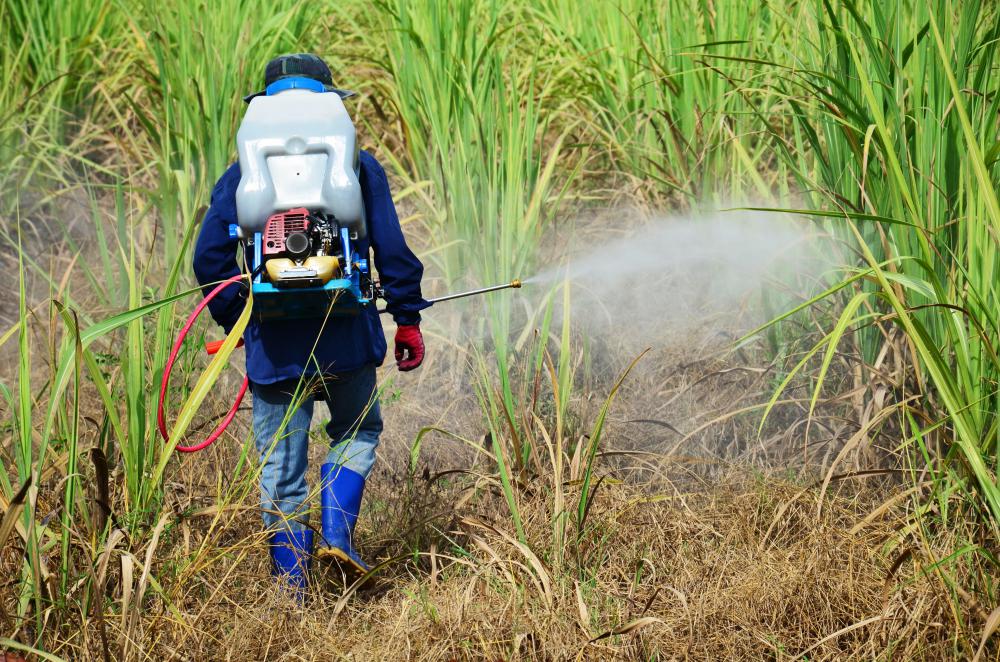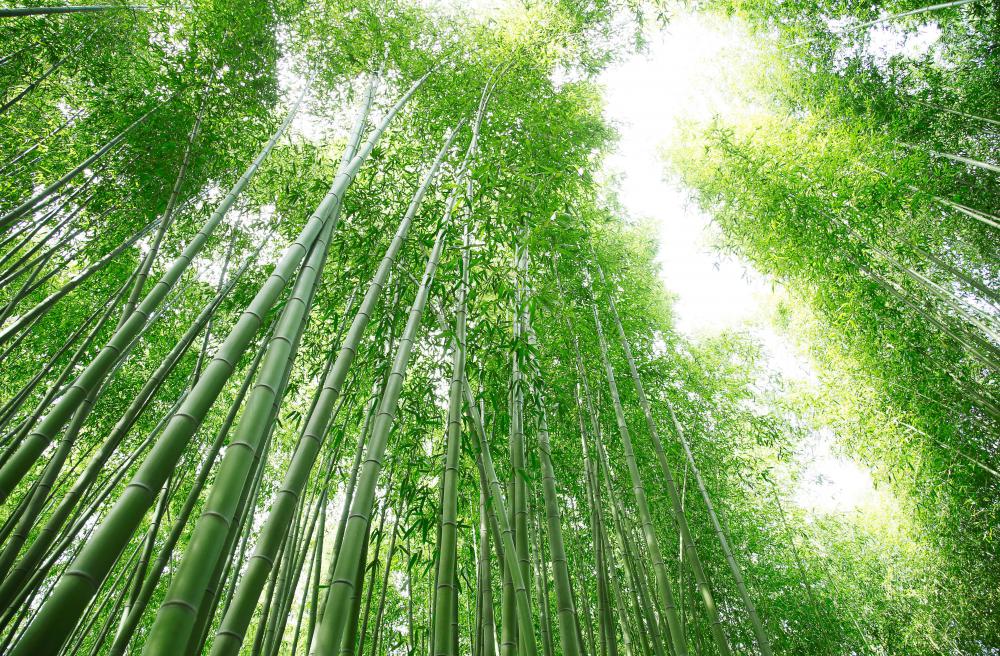At AllThingsNature, we're committed to delivering accurate, trustworthy information. Our expert-authored content is rigorously fact-checked and sourced from credible authorities. Discover how we uphold the highest standards in providing you with reliable knowledge.
What Is a Protected Species?
A protected species is any plant or animal a government declares by law to warrant protection. Most protected species are considered either threatened or endangered. In these cases, a government establishes certain rules regarding the species, that if violated, can result in fines or criminal prosecution. Species protection laws differ from government to government. In the US, state laws may declare a species protected, while federal laws do not. In most cases a federally declared protected species must be respected by the state.
The impetus behind protection laws is risk of species extinction. Ecologists have demonstrated that losing even the smallest of species can have a direct effect on the rest of the plant and animal population. For example, a grass eaten by a specific animal becomes extinct due to habitat destruction. The animal may die off as a result of not finding its food source available, causing further disruptions in the food chain.

While some animals adapt by finding new food sources, other animals do not. Destruction of the bamboo forests for example, in China, greatly reduced the panda population. Scientists discovered that pandas ate different types of bamboo at different times of the year. Even a small loss of bamboo was significant to the panda which is now on the verge of extinction.

Species protection laws may include provisions for leaving the habitats of some protected species undisturbed. They may also include provisions regarding hunting, fishing or even trespassing in an area where a protected species lives. Some laws are enacted to remove introduced predators from an area, actually encouraging either hunting or trapping of animals that do not belong in the habitat.

The eastern quoll, a tiny marsupial, was once common to all of Australia but is now found only on Tasmania. When Europeans began to have foxhunts in Australia, a number of foxes survived and thus began to eat the quoll. Each year fewer and fewer quoll exist. There is a small population of foxes on Tasmania which environmentalists fear will ultimately take hold and destroy the rest of the Eastern quoll.

Often humans are most indicated in causing plants or animals to become protected. By building in previously untouched areas, we frequently destroy habitats. In most cases, we indirectly destroy habitat through pollution. Chemicals deriving from many sources are the most common forms of pollutants. Cosmetics, cleaning products, pesticides, and fuel all contribute to pollute water and air, reducing species populations.

Species protection laws tend to aim specifically at maintaining habitats, but some problems exist. Not all countries honor protection of given species. This is particularly important to animals living in the sea. When the US first declared humpback whales as a protected species, some countries still caught and killed them.
One government cannot stop another government from reducing the numbers of a protected species. Pressure applied by several governments can convince those not recognizing the protection status of an animal to do so. But opinions differ as to when a species has recovered enough to not warrant protection. Recently, some governments have begun whaling again, irrespective of their protected status.

Countries debate these issues internally. In the US, many feel strongly that further encroachment on habitats of protected species should be discouraged at all costs. Others believe humans have rights trumping those of animals or plants. Serving industry is more important than protecting a species. This schism in opinion tends to break along political separations between Democrats and Republicans. Democrats are more likely to support environmentally friendly laws, while Republicans tend to be more in support of the rights of businesses. Although these political stereotypes tend to hold true, there are Democrats and Republicans on both sides of the issues.

Since the election of President George W. Bush, environmentalists have been frustrated by what they perceive as a lack of support in declaring plants and animals protected. Environmentalists believe that urgency is often required to save a species from extinction, and feel this sense of urgency is not shared by enough politicians and citizens.
Frequently Asked Questions
What defines a species as "protected"?

A protected species is one that is afforded legal protection by legislation or international agreements due to its vulnerability to extinction or declining population. This status restricts activities that could harm the species or its habitat, aiming to prevent further decline and promote recovery efforts.
Why are certain species given protected status?
Species are given protected status when they face significant threats such as habitat loss, pollution, overhunting, or climate change. Protection is crucial to conserve biodiversity and maintain healthy ecosystems. According to the IUCN, over 28,000 species are currently at risk of extinction, highlighting the need for such measures.
How are protected species chosen?
Protected species are typically chosen based on scientific assessments of their population status, threats, and ecological significance. Organizations like the International Union for Conservation of Nature (IUCN) provide data on species' risk levels, which can influence legal protections under national laws or international conventions.
What are the consequences of violating protected species regulations?
Violating protected species regulations can result in severe consequences, including hefty fines, imprisonment, and confiscation of property. Penalties are designed to deter illegal activities like poaching, trafficking, or habitat destruction, ensuring the laws effectively safeguard vulnerable species.
Can a species' protected status ever be removed?
Yes, a species' protected status can be removed if scientific evidence shows a substantial and sustained recovery in its population and the threats to its survival have been mitigated. However, this decision is made with caution to ensure that progress is not reversed.
How does protecting a species benefit the environment and humans?
Protecting a species helps preserve the balance of ecosystems, which are vital for clean air, water, and soil. Healthy ecosystems also provide services like pollination of crops and disease control. Moreover, species diversity contributes to medical discoveries and economic benefits through ecotourism, according to the United Nations Environment Programme.
AS FEATURED ON:
AS FEATURED ON:


















Discussion Comments
The wolf populations are exploding in the West, and they are causing the removal of Elk, Deer, Sheep and goat populations. That may cause all of them to be on the endangered species list, if the F&W departments. don't cull them to a manageable level. There are so many of them, they have chased the cougars and bears into some of the human areas year round; they are eating pets, and coyotes as well. Too many idiots want a re-wilding of the western US, without looking at the end results of their nonsense.
@pleonasm - The really sad part is that wolves and tigers and other animals at the top of the food chain are often keystone parts of the ecosystem and the entire thing collapses without them. Their natural prey becomes too numerous and will eat themselves out of what little food they have left, destroying all the rare plants as well.
@pastanaga - You also have the problem that always occurs when you're trying to increase the numbers of an apex predator around human populations. I know that farmers in the areas where wolves are increasing in numbers are worried about their cattle and sheep being hunted.
And I've even heard of killer tigers hunting people in places where they are a threatened species. What do you do in that case? If the last tiger in the world is driven to killing people, do you hunt that tiger down? I think most of the world would say yes. So I hope they can figure out some way to avoid having to ask that question.
This is always a complex issue. There are cases where protected species have increased to the point where they are outgrowing the little habitat they have left to them and the best solution is actually for them to be culled before they degrade their own environment.
Elephants, for example, need a huge range and can be very destructive. That didn't matter when they had massive landscapes to live in, but it does matter now when they are sharing smaller areas with a lot of other endangered animals.
But people get very angry when they hear about rare animals like elephants being slaughtered, even if it is for the good of the species.
Post your comments